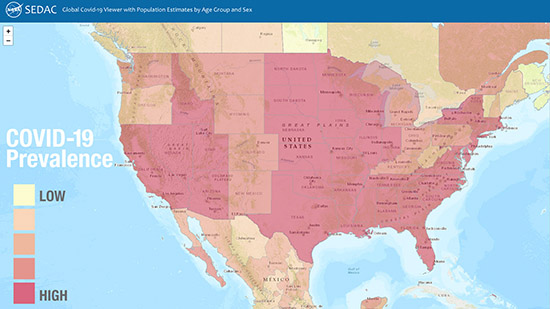The Joint Research Centre (JRC) of the European Commission has released the 2020 edition of the Atlas of the Human Planet, focused on open geoinformation for research, policy, and action, under the auspices of the Human Planet Initiative of the Group on Earth Observations (GEO). This year′s Atlas features more than 30 applications of the georeferenced human settlement and population data in four thematic areas: disaster risk management, urbanization, development, and environment and sustainability. Two of the applications showcased were developed by CIESIN: the Global COVID-19 Viewer operated by the NASA Socioeconomic Data and Applications Center (SEDAC), in “Mapping the COVID-19 Pandemic and Potential Risk Factors,″ and a summary of an update to a 2007 data set available from SEDAC, in “New Estimates of Global Population and Land in the Low Elevation Coastal Zone Using GHSL-based Data Sets.″ The first showcase was prepared by CIESIN director Robert Chen, GIS programmer Kytt MacManus, and associate director for Science Applications Alex de Sherbinin. The second was authored by MacManus, former SEDAC project scientist Deborah Balk of Baruch College, staff associate Hasim Engin, UK demographer Gordon McGranahan, former research staff assistant Rya Inman, and intern Alexandra Hayes.
The JRC organized a virtual launch event January 21 that drew more than 90 participants. The event included 4 short presentations on selected applications, including the Global COVID-19 Viewer example, described by Chen. The Viewer, developed and enhanced in 2020, helps users visualize a range of data on COVID-19 cases and mortality in relationship to spatial data on demographic and environmental factors that may affect exposure and vulnerability, such as age structure, degree of urbanization, air quality, and elevation. Chen and Martino Pesaresi of the JRC are co-leaders of the GEO Human Planet Initiative.
